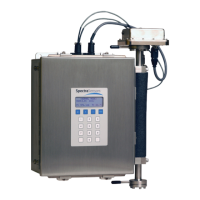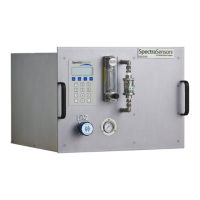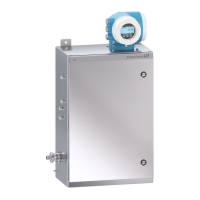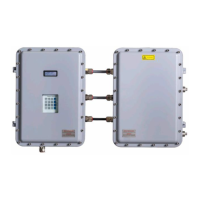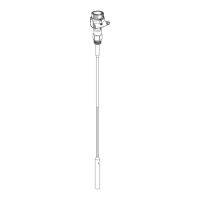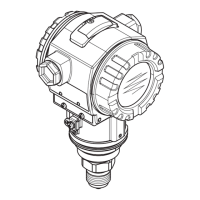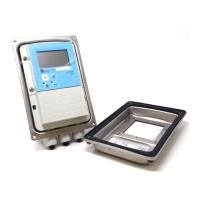Installation
Hardware Installation and Maintenance Manual 3
–5
Protective chassis and ground connections
Before connecting any electrical signal or power, the protective and chassis
grounds must be connected. Requirements for the protective and chassis
grounds are as follows:
• The protective and chassis grounds must be of equal or greater size
than any other current-carrying conductors, including the heater
located in the sample conditioning system.
• The protective and chassis grounds must remain connected until all
other wiring is removed.
• If the protective and chassis ground is insulated, it must use the
green/yellow color.
For the protective ground locations on AC electronics, refer to Figure 1–6,
Figure 1–8 and Figure 1–10. For the protective ground locations on DC
electronics, refer to Figure 1–7, Figure 1–9 and Figure 1–11. The chassis
ground connection is typically located on the lower cabinet (SCS). Refer to
“Sample Conditioning System” on page 4-1.
Toconnectelectricalpowertotheanalyzer
1. Open the electronics enclosure door. Take care not to disturb the
electrical assembly inside.
2. Run conduit from the power distribution panel to the conduit hub on
the electronics enclosure labeled for the analyzer power input.
Hazardous voltage and risk of electric shock. Failure to
properly ground the analyzer may create a high-voltage shock
hazard.
Conduit seals should be used where appropriate in compliance
with local regulations.
Because the breaker in the power distribution panel or switch will
be the primary means of disconnecting the power from the
analyzer, the power distribution panel should be located in close
proximity to the equipment and within easy reach of the operator,
or within 10 feet of the analyzer.
An approved switch or circuit breaker rated for 15 amps should be
used and clearly marked as the disconnecting device for the
analyzer.
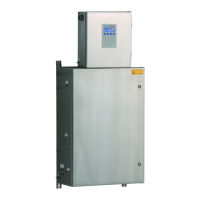
